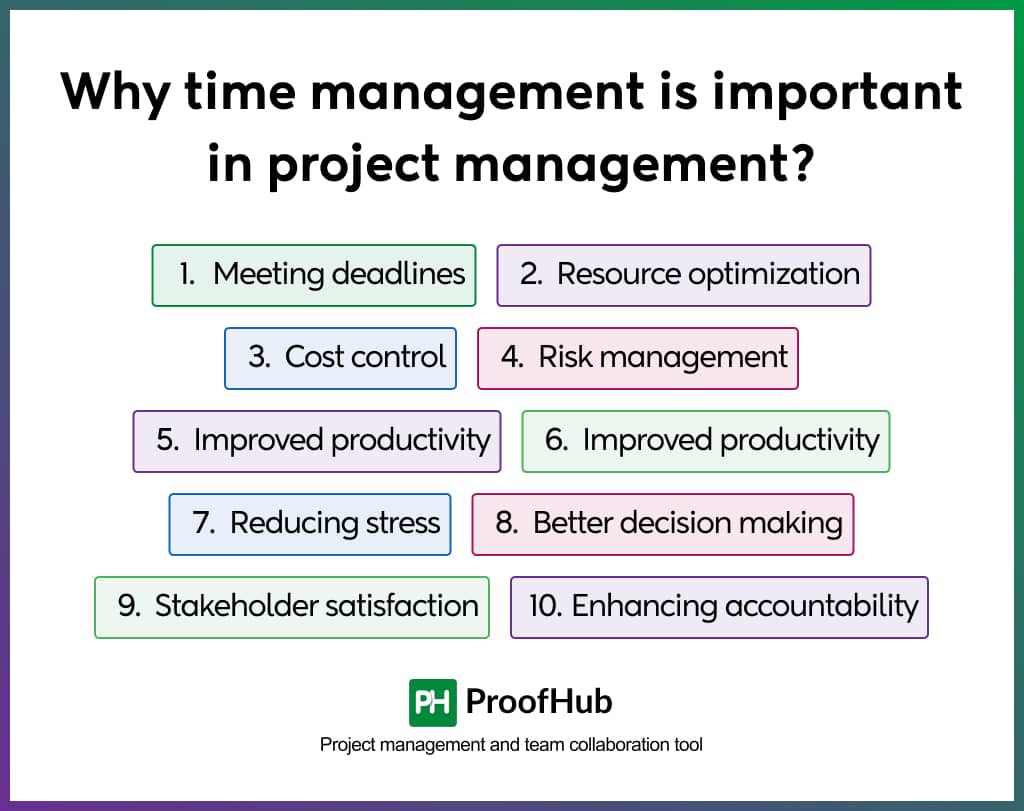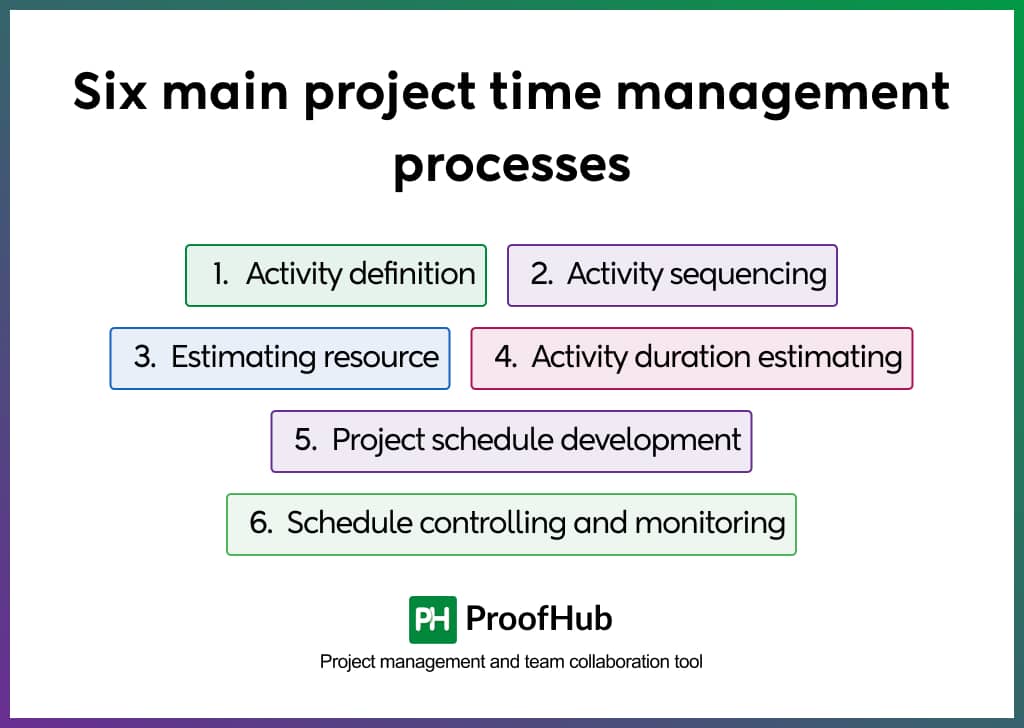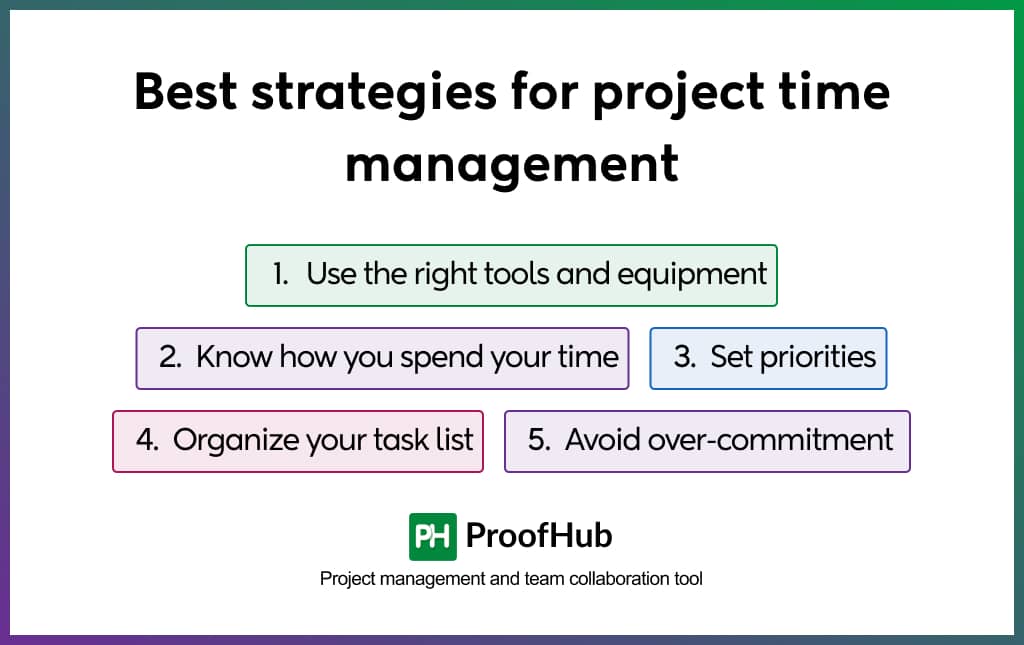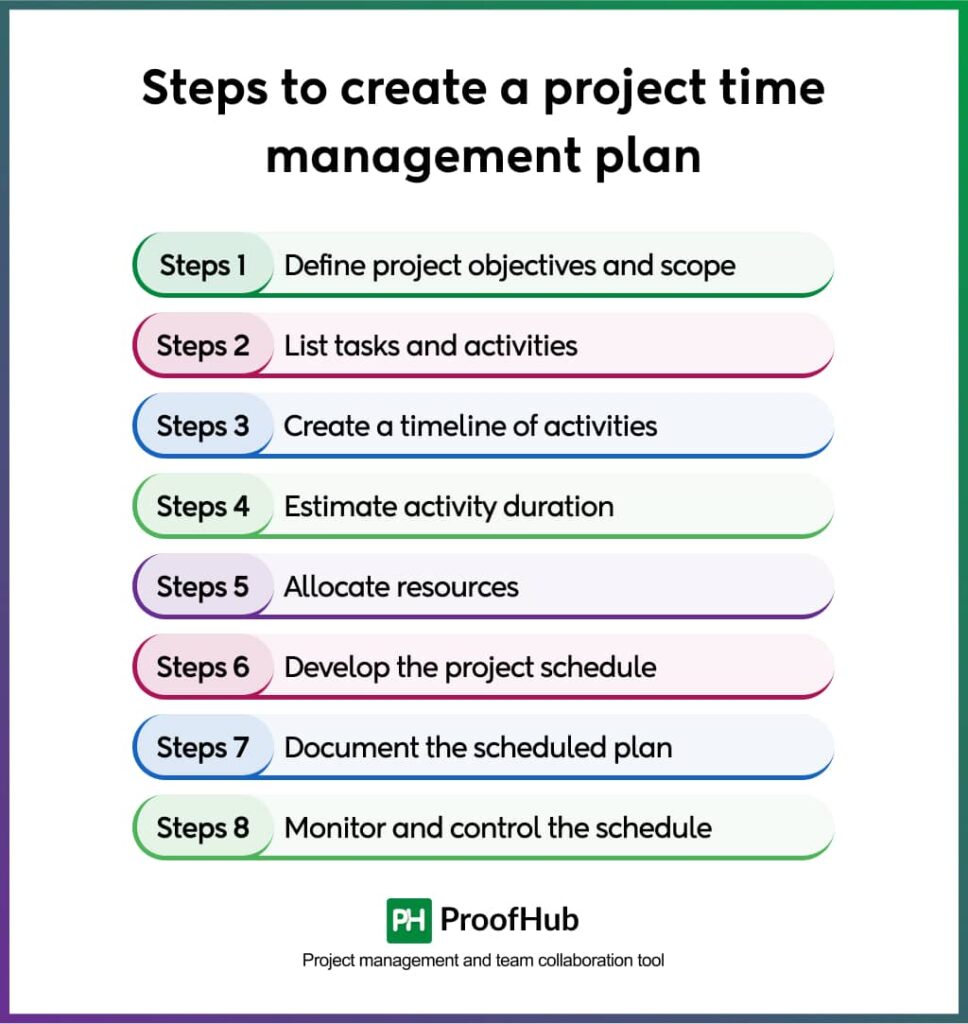Time management is one of the most important aspects of a successful project execution. Time is a very critical resource in any project and how you manage it determines whether the project is completed on time, within budget, and to the desired quality. Project time management involves planning, estimation, scheduling, and controlling time spent on various tasks to ensure that the project runs as planned. By applying the right strategies, managers can keep their projects and teams on track.
For managers, teams, and everyone, project time management is one of the important factors of project management commitment.
So now we know that time is an important aspect, and it directly affects the project outcome. Understanding the importance of controlling the time aspect is key to delivering successful projects. Keeping all this in mind, let’s first learn what project time management is.
What is project time management?
Project time management is the skill of analyzing the timeline of the project and ensuring that the project is completed within the time, scope, and budget. It is not just about tracking the hours spent, it is about strategically planning, monitoring, and controlling the overall direction of the project.
A Free guide to help you with proven ways to lead a project from start to finish, without confusion or jargon.

Why time management is important in project management?

Managing time is the most critical part of project management. It involves organizing tasks, prioritizing resources, and meeting deadlines to achieve project goals. Lack of effective time management will affect the project in the long run. Here are a few reasons why managing time is important in project management:
1. Meeting deadlines: Effective time management is important to ensure the project is completed within the scheduled time frame.
2. Resource optimization: Proper time management helps efficiently allocate and utilize project resources. By allocating appropriate time to tasks and managing team members’ time, project managers can use resources efficiently.
3. Improve efficiency: Planned time management helps identify priorities, reduces waste efforts, and ensures that resources are focused on important tasks.
4. Cost control: Effective time management helps in keeping the project on schedule, which can directly affect the delivery date and cost of the project.
5. Risk management: By allocating appropriate time for project assessment, project managers can ensure that the project risks are timely identified and mitigated, reducing the impact of potential issues.
6. Improved productivity: Efficient time management increases the project team’s productivity. Team members can work more efficiently and effectively by allocating a sufficient amount of time to tasks, setting priorities, and establishing clear timelines.
7. Reducing stress: Proper time management prevents last-minute rushes, reduces the stress of team members and managers, and creates a positive work environment.
8. Better decision making: With a clear understanding of the project timeline, project managers can make informed decisions regarding task prioritization, resource allocation, and potential adjustments to the project plan.
9. Stakeholder satisfaction: Meeting project deadlines and delivering results on time enhances the reputation of the project team and builds trust with stakeholders.
10. Enhancing accountability: With well-defined timelines, team members can easily understand their roles and responsibilities, and create accountability and ownership of their tasks.
Six main project time management processes

1. Activity definition: The project team should identify and schedule different activities and tasks to be done during the project life cycle. These are the things that are required for timely project deliverables.
2. Activity sequencing: In this step, project managers need to introduce documents and map task dependencies. It defines the order in which deliverables must be completed.
3. Estimating resources: Identifying and defining the resources including people, materials, and machines required to complete a deliverable.
4. Activity duration estimating: Estimating the timeline using formulas such as PERT(Program Evaluation Review Technique) to develop an exact schedule for the completion of durables.
5. Project schedule development: Plotting the start and end dates for each activity as well as the analysis of the order of activities, timelines, resources, and schedule barriers to having an accurate schedule.
6. Schedule controlling and monitoring: Regularly monitor the progress of the project and review progress so that it is manageable when there is a need to change the product schedule.
Best strategies for project time management

1. Use the right tools and equipment
What is the first step in project time management? If you are not aware of it, it is using the right tools and equipment. There are many project management tools for vast, varied needs and they serve many different functions. In project management, a project manager will have to use tools to manage time effectively on projects.
If the right tools and equipment are not available, even the most talented project manager will not be able to meet deadlines. Some areas to look after are our communication, project planning software, time tracking software, time management tools, and collaboration software.
ProofHub
ProofHub is a versatile project collaboration and time management system with built-in time-tracking software to bring all your time-related data in one place. Its time tracking feature is designed to help team managers find out how much “actual” time is spent on performing tasks and eliminate time wastage from the process.
Let’s take a look at the useful features of ProofHub’s time-tracking software system:
- Add timesheets – ProofHub timesheets help team managers track their team’s performance by maintaining a record of all the time entries they have devoted to performing their tasks.
You can use these timesheets for payroll, client billing, estimation, tracking, and time management. Users can also export these timesheets for invoicing and billing purposes. - Time reports – Team managers can create custom time reports of people and projects to get a clear idea of where the time goes.
- Set time estimates – Managers can set time estimates for tasks to define the “expected” time it should take to get them done. Get notified immediately if the time taken exceeds the actual time set, making the most of ProofHub’s time management tool.
- Comprehensive view of all time data – You can have a bird’s eye view of all time data of all team members stored in one place, across all projects, billable or non-billable, without the need to jump through projects.
- Track time manually or using timers – You can track time either manually or using timers. Manual time entries can be used to record the number of hours it took to get work done and track time spent for billable or non-billable hours.
Apart from time tracking software, it also has a range of other useful features – Proofing, White-Labeling, Tasks, Kanban Boards, Gantt Charts, Reports, Chat, and Calendars to help teams achieve more in less time.
Toggl
Toggl is a no-hassle time-tracking software that is the perfect add-on to your existing tools to help you be more productive throughout the day. Yet, its features are quite limited. Toggl may not reach your and your team’s expectations, especially if you want detailed project time tracking. The tool is usually praised for its simplicity.
Hubstaff
Hubstaff is another popular time management app that offers the feature of project time management. The software tracks the time spent on work as well as your team’s leisure time in the form of activity reports. It has a flexible calendar view to see different time entries – daily, weekly, or monthly. That’s a great feature for analyzing your team’s performance and managing projects all the time.
If you’re constantly juggling with deadlines and deliverables, then it is sure that you would benefit from dedicated time management software.
2. Know how you spend your time
Keep a time log to find how you are using your time. Time is the most valuable asset. If you’re overlooking your routine, it can lead to a loss in productivity. Record what you are doing for 15-minute intervals for some time. When you are mindful of what task is taking your time and what you are spending your time on, you can better manage it.
“How we spend our days is, of course, how we spend our lives.” ~Annie Dillard
Find your most time-consuming tasks and see if you are investing your time in the most important activities. When everyone has the same number of hours in the day, why do some seem to get so much more done? Because they have a good sense of where they spend their time on routine tasks and estimate how much time is available for the rest of the activities.
3. Set priorities
Setting priorities to manage your time effectively requires a difference between what is important and what is urgent. When the goals are set and you’ve determined the individual tasks that you need to do, it’s time to prioritize. Prioritizing is a way to get things done if it is done in the right way.
Use the Eisenhower Matrix to prioritize your tasks, this will help you to make the distinction between tasks that are important, not important, urgent, and not urgent.
For example, look at your daily tasks and prioritize them according to:
- Important and urgent: Do these tasks right away.
- Important but not urgent: Decide when to do these tasks.
- Urgent but not important: Delegate these tasks if possible.
- Not urgent and not important: Set these aside to do later.
Focusing on your tasks according to the above format, you can have greater control over your time, and time management will always be by your side. Also, one of the easiest ways to prioritize is to make a “to-do” list on project management software. When you’re making the list, be careful it doesn’t get out of control. Rank the items in order of priority to have a sense of accomplishment as you move down the list.
4. Organize your task list
Task Lists are a compound of all the project responsibilities for teams and the project manager. A powerful thing that we can do to better manage time is to organize it. Sure, organizing your task list is a great thing and there are several different ways you can do it.
Organize tasks by due date
This is one important thing that managers and employees choose to do when organizing tasks over task management software. Some due dates need to be hit and it should be done for time management. You’ll be motivated to accomplish the task when you’ve got a due date.
Simply add start and due dates to each task or sub-tasks in your task list and sort them out by the due date. This will give you an idea of what needs to be done today and what is to be done in the coming days.
Pro Tip: Using ProofHub you can set the due date to make a task recurring, set recurrence, see overdue tasks on your list, and change the dates in case of unforeseen requirements.
Organize tasks by progress (with Kanban)
Every task includes sub-tasks that help you move through your goals smoothly. Having to manage these tasks and sub-tasks on Kanban is a great method to manage your time as you organize your work by progress. Simply make a to-do list on the Kanban board.
Kanban board lets you organize and manage your process by visualizing every step of your workflow. When you move your tasks through stages as it progresses, you can complete projects efficiently.
5. Avoid over-commitment
This one can be tricky because most of the time project managers and teams doubt if they are working on the right initiative that requires minimizing interruptions. Over-commitment or commitment fallacy is a fear in the modern workplace as it can lead to failing projects. And sometimes we refuse to move away from a project because we’ve already put a lot of work into it.
Even when it is a better option to work on something else. But if you have to improve your time management skills, it becomes important to know what should you be working on that will bring the utmost impact. This way you can quickly move from project to project without wasting time and avoid wasteful work.
Use the 80/20 rule
Also known as the Pareto principle, the 80/20 rule is one of the helpful concepts of time management. It states that approximately 80% of your results will come from 20% of the work that you do. This principle is important to learn and understand to optimize your workday and to learn how to prioritize your tasks, days, weeks, and months.
How to create a project time management plan?
A project time management plan requires a structured approach to ensure that all activities in the project are scheduled on time to meet the set deadline. This provides an overview of creating an effective project time management plan.
Steps to create a project time management plan:

1. Define project objectives and scope: Start by setting clear goals and scope for the project. This creates a solid foundation for what needs to be achieved and clarifies the boundaries within which the project will be executed.
2. List tasks and activities: Break down a project into smaller, more manageable tasks. This step is crucial for creating a list of activities necessary to achieve the project objectives.
3. Create a timeline of activities: Determine what needs to be done first and identify any dependencies between them. Sequencing logically the tasks is also necessary in order to create a smooth flow of it, and then do them in the correct order.
4. Estimate activity duration: Estimate the time needed to complete each activity. Consider factors such as task complexity, resource availability, and potential risks that may impact duration.
5. Allocate resources: Identify the resources required to complete each task, including human resources, materials, and tools. Ensuring effective allocation of resources will prevent conflicts and ensure everything is available when required.
6. Develop the project schedule: Use a project management tool like ProofHub to create a visual timeline of the project. Input all the activities, durations, start and end dates, and resource assignments to generate a schedule for your project.
7. Document the scheduled plan: Describe every step of your time management process, including how the schedule will be created, tracked, and managed. All project participants can use this documentation as a point of reference.
8. Monitor and control the schedule: After creating a schedule, make a mechanism for tracking progress for milestones and deadlines. Regularly review performance to identify if any changes are required and implement them as necessary.
Conclusion
Project time management is necessary for completing projects successfully and meeting deadlines. Project managers can keep their teams focused and productive by planning tasks, prioritizing them, and using the right tools. Proper time management not only ensures timely delivery but also optimizes resources, minimizes risks, and boosts team morale.
If you are looking for a solution to enhance your time management, then ProofHub is a perfect tool for you. From time tracking to task organization, Kanban boards, and Gantt charts, ProofHub enables the teams to plan, collaborate, and deliver projects with efficiency. Try ProofHub for free!
FAQs
Why is time management crucial in a project?
Good time management is vital to any project’s success. It helps to minimize time wastage and makes people accountable for their performance.
What is time management software?
Time management software helps to accurately track time of the amount of time people take to perform tasks across all projects.
What are the best project time management tools?
ProofHub, Asana, Scoro, Toggl, Clarizen, and Timecamp are some of the best project time management tools.
What skills are required for managing project time?
Project time management requires skills like scheduling, prioritization, team management, and resource allocation. Effective communication and problem-solving are also essential for keeping tasks on track.
Also read:

